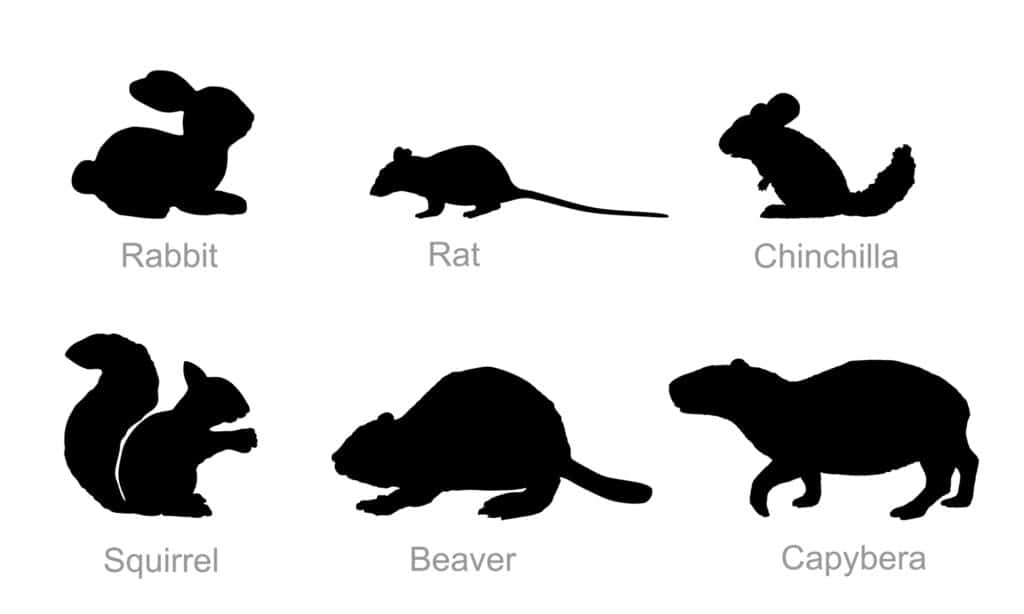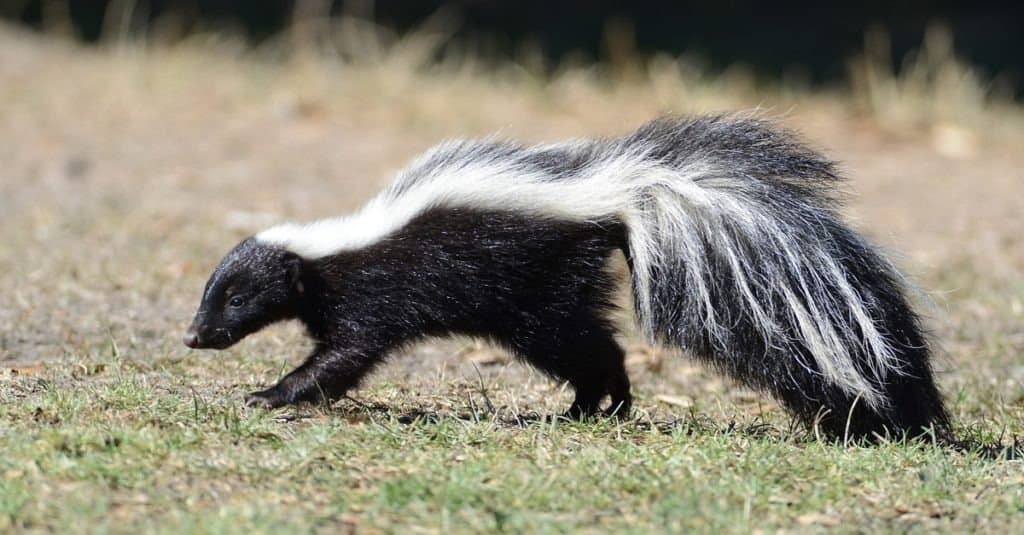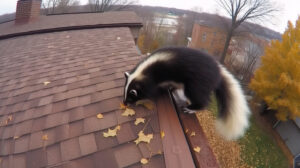Skunks are small mammals that are widespread across North and South America. They live in various habitats, including forests, woodlands, grasslands, deserts, and urban areas. They are easily distinguished by their bold black and white appearance and are fierce predators despite their small size. However, one of the questions that frequently comes up when discussing them is, “are skunks rodents?” In part, this comes about because of their small, defined face and in part because of their liking for scavenging in urban areas.
This article will take a closer look at these unusual animals and discover whether they really are rodents. We’ll learn about what is unique to rodents and see whether skunks fit into that category. We’ll also discover what makes skunks so special, including finding out about their impressive defense mechanism. So join us as we find out whether skunks are rodents or not!
What’s Special About Rodents?

Rodents are one of the most diverse groups of animals in the world.
©Save nature and wildlife/Shutterstock.com
When we think about rodents, we probably instantly think about rats and mice, but rodents are actually one of the most diverse groups of animals in the world. They come in all shapes and sizes, live in a diverse range of habitats, and are found everywhere except Antarctica. Most (although not all) have stocky bodies, short limbs, and long tails. Most are also herbivores, although some are omnivores. However, rodents all have one thing in common – constantly growing teeth. That’s right; rodents don’t chew on all manner of things just for the fun of it! Instead, they have to gnaw constantly to stop their teeth from getting too big for their mouths.
The constant action of gnawing has a double purpose, though, as it keeps their teeth worn down to a manageable length and keeps them sharp. This is because the movement wears down the softer dentin on the rear of their teeth quicker than the tough enamel on the front and creates a sharp chisel-shaped edge on them.
Additionally, rodents lack canine teeth – the sharp, pointy ones which are often known as fangs. Instead of canine teeth, rodents have a large gap between the incisors and premolars where they should be.
Are Skunks Rodents?

Skunks are not rodents. They are members of the
Carnivoraorder and have different teeth.
©Matt Knoth/Shutterstock.com
Skunks are not rodents. Despite their appearance, there are some major differences between them. Skunks and rodents are not related and are from completely different orders. Skunks have a much smaller range than rodents do, and they have very different teeth, which are adapted to their lifestyle and diet in different ways. Additionally, skunks eat rodents. They also have a unique defense mechanism that no rodent has.
Skunks are from a Different Order
All rodents are from the Rodentia order, which contains more than 2,000 species across 489 genera. In total, around 40% of all mammals are rodents! Skunks are from the Carnivora order, which comprises around 280 species, including cats, dogs, seals, raccoons, cheetahs, and many more. Members of the Carnivora order are specialized meat-eaters, which is where the term “carnivores” comes from. However, many members (including skunks) are actually omnivores rather than strictly carnivores. Members of the Carnivora order are found all over the world – both on land and at sea – and in a wide variety of habitats.
Skunks are also from the Mephitidae family group, which comprises only skunks and stink badgers (their closest relatives). There are currently ten species of skunk found across three genera.
Skunks have Different Teeth
As we’ve already mentioned, rodents are famous for their constantly growing incisor teeth. Well, skunks have some pretty unique teeth too – but they are very different from those of rodents. For a start, skunks don’t have incisors that grow continually, although they are still pretty sharp. They also have canine teeth, which rodents lack, used for piercing and killing their prey.
However, skunks also have a set of teeth that are unique to all meat-eaters – carnassial teeth. Carnassials are blade-like teeth that work with a scissor action and are used for slicing through prey. The carnassial teeth on skunks are the last upper molar and the first lower molar teeth. They also have a broad “crushing tooth,” which is the first upper molar. Skunks are the main predators of honeybees, but they also eat a range of worms, birds, rodents, lizards, frogs, snakes, berries, leaves, and nuts.
What’s That Smell?

Skunks produce a foul-smelling liquid that they can spray up to 10 feet away as a defense mechanism.
©Geoffrey Kuchera/Shutterstock.com
Skunks are most famous for their ability to produce and spray a foul-smelling liquid. This strong-smelling liquid comes from their anal glands and is used as a defense mechanism. Only skunks and stink badgers release this liquid. Skunks spray it as a mixture of sulfur-containing chemicals, and it has a smell that is strong enough to be detected by a human 3.5 miles away.
Skunks carry enough liquid for five or six sprays, after which it takes them around ten days to produce some more. Due to the muscles next to the anal glands, skunks can spray their liquid over distances as far as 10 feet away. This is particularly useful for deterring predators. In fact, many predators – such as foxes and coyotes – won’t even attack skunks for fear of being sprayed. The only real threat to skunks is the great horned owl.
The striking black and white color of skunks acts as a warning system to their potential predators that they have a good defense mechanism as they generally prefer only to use their spray as a last resort. This is why they also perform an elaborate routine of hissing and foot-stamping when they are threatened to try and ward off their predator before releasing their spray.
The photo featured at the top of this post is © Jeremy Richards/Shutterstock.com
Thank you for reading! Have some feedback for us? Contact the AZ Animals editorial team.





